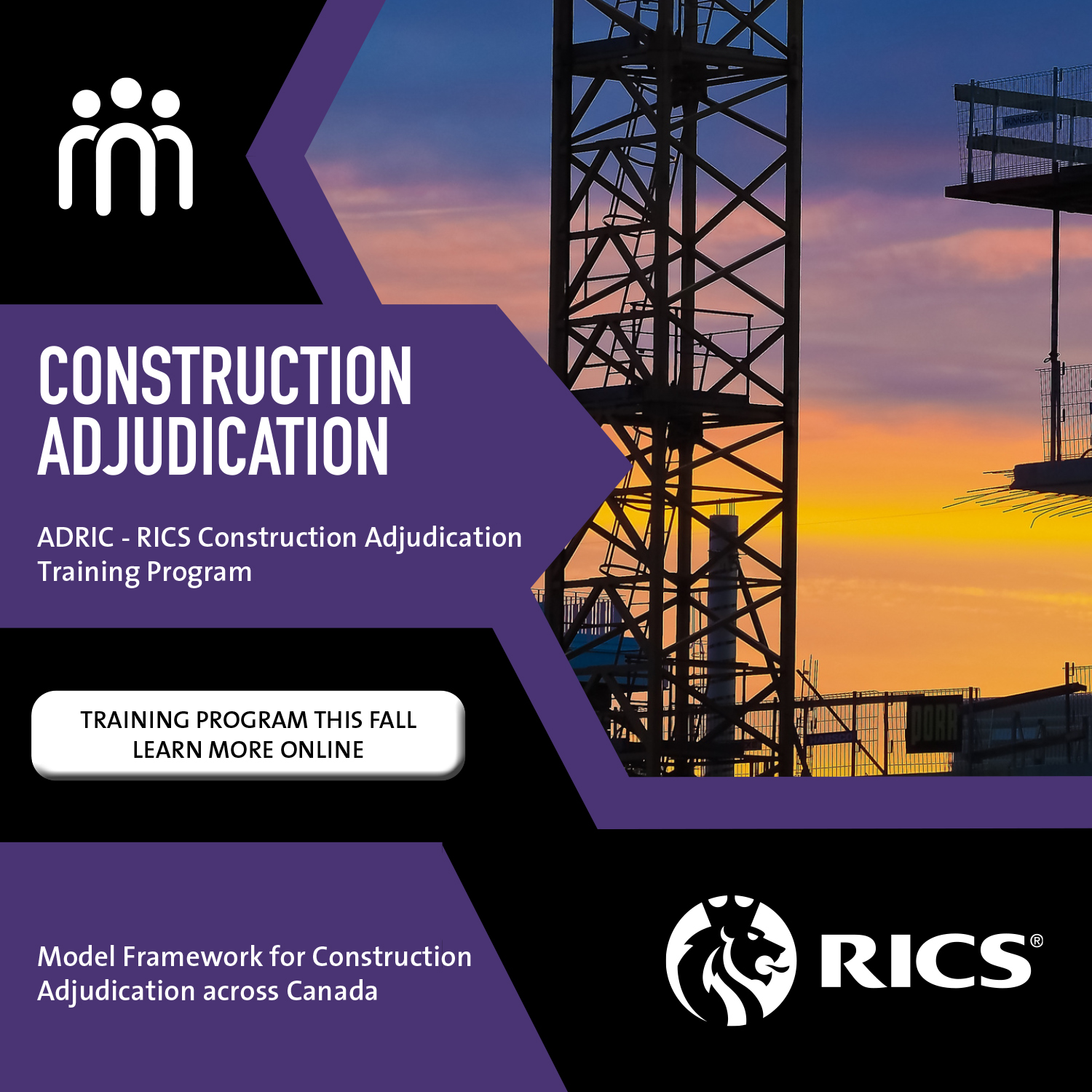
The Settlement through Black Robe Anxiety
Uncertainty & Fear of Loss May Carry the Day
By Gerald R. (Jerry) Genge, B.A.Sc., LL.M. P.Eng., C.Arb., Q.Med.

Doubtless, this article is going to ruffle some feathers. I want the reader to open their mind to the notion that settlement of cases may be more about uncertainty and loss than genuine agreement. That uncertainty and loss are, in large measure, the conscious or unconscious result of “black robe anxiety”.
Settle or Else
Imagine that you are mediating a civil dispute. While the parties each have emotional, technical, and contractual reasons for their dispute, at the end of the day, they all know that money will be the proxy for justice. The parties come in entrenched in their positions, each convinced of their entitlements, and all shored up by legal counsel skilled at building confidence in the strengths of their case and weaknesses of the others’ case. Your job in the next few hours or days, amongst others, is to chip away at their defences, look for common ground, manage emotion, confront intransigence, redirect the conversation, and seek agreement. That is what we are told is the role of a mediator, but many times, the ace in the hole employed by mediators is to stimulate what I call “black robe anxiety”.
You build black robe anxiety by using a variety of statements at different times to introduce the ever-present possibility that a trier of fact will not see the case the way you see it. But it is more than worrying about the likelihood of a judge’s agreement with your view of things. It is fear-based leverage. Some of the most successful mediators use it. They bring awareness of outrageous costs, unreasonable awards, and extensive lost opportunities. So, the parties compromise. Rarely is there an epiphany making them suddenly altruistic or understanding. They are often exhausted over the process and running out of funds. They reconcile paying more or accepting less as an avoidance measure of the uncertainty and fear of loss. It is not the ideal or preferred approach, but it is common.
Process, Pomp, and Piety
Black robe anxiety arises in parties unaccustomed to the civil court process. While litigators are comfortable with what Julie Macfarlane calls “Justice as Process”, control over a claim’s slow and costly advancement from framing to the conclusion, parties want to see justice and get on with life as they see it. The “process” is expensive and unfamiliar. So, the prospect of getting into a courtroom clad in old ornate wood, with church-pew-style seating, and an air of solemn piety can give a person pause to consider less stressful options. They worry about being in unfamiliar surroundings, going through metal detectors, carrying themselves in ways they usually do not, and speaking in hushed and reverent tones in awe of the edifice, the house of law. Who wants that?
The courtrooms in Canada are places where the judge and the lawyers wear black robes, black bar jackets, white collars and white bibs or jabot – vestiges of the 17th-century British courts (well, at least they don’t wear white powdered wigs anymore). These trappings add to the pomp and circumstance of the courtroom. It has been said that the tails on the jabot are representations of the tablets of Moses. Every day on social media, on being called to the bar, a young lawyer posts a picture of themselves in future courtroom attire. They would never wear those garments anywhere but in the courthouse. It brings to mind secret society meetings – a cloaking representative of distinct separation from ordinary people.
The judicial system is always talking about “proportionality”. Proportionality is applying proper balance between the process and the matter at hand. It seems that line of thinking does not apply to robing. Robes represent control, and to a party, may lead to a belief that failing to settle a claim at mediation will mean abandoning control to those in robes. Regardless, the idea of sitting at a table next to a person in robes and looking at a person in even fancier robes who has control over everything can rattle a person.
Dress Up or Don’t Come
Parties are expected to wear dress or business attire, dress shoes, no hats, and with overcoats, bags, and cases stored out of the judge’s view. If a participant is a contractor whose business attire doesn’t include a shirt with a collar or buttons, they’re going shopping before they go to court. For some, it brings a level of hypocrisy to their presence. They may think…”You all say I must be honest, but the person I look like today, that is not me”. Hopefully, without bringing forward any sign of disrespect to the office of the judiciary and those that serve its vital purpose in society, one must ask the question – who actually benefits from the courtroom clothing? For some, the fear of putting oneself in that unfamiliar situation might be just enough to leverage a less-than-satisfactory “out of court” deal.
Black robe anxiety, fear of litigation, whatever you choose to call it, is real. Unfamiliar situations become places to avoid for parties. That anxiety, rightly or wrongly, has been the blunt instrument to obtain many a settlement. As I see it, if black robe anxiety becomes the primary lever for settlement, mediation has lost its way, and a better alternative should be sought.
Alternatives
Other than mediation, numerous options are developing that would keep a dispute out of court. Expert determinations are becoming part of construction disputes through changes in construction legislation, contracts, and other private agreements. These tend to be cost-effective and are aligned with appropriate expert adjudicators. The bodies that govern administrative law commonly employ dispute resolution tribunals, albeit limited in scope. And, well-designed actual dispute resolution, which I differentiate from “settlement”, is gaining ground. These processes should be kept in mind as alternatives to fear-based settlement arising from the relinquishing of party control over their claim.
Gerald R. (Jerry) Genge, B.A.Sc., LL.M., P.Eng., BDS, BSS, C.Arb. Q.Med. is the Principal of Genge Construction Adjudications, has a certificate in Advanced Adjudication for Administrative Agencies, Boards and Tribunals, is a Qualified Mediator and a Chartered Arbitrator with ADRIC, a Mediator and Adjudicator with the Condominium Authority Tribunal in Ontario, and a qualified ODACC Adjudicator. He is a strong proponent of cost-effective, low-anxiety, and speedy resolution of claims through mediation and arbitration.












